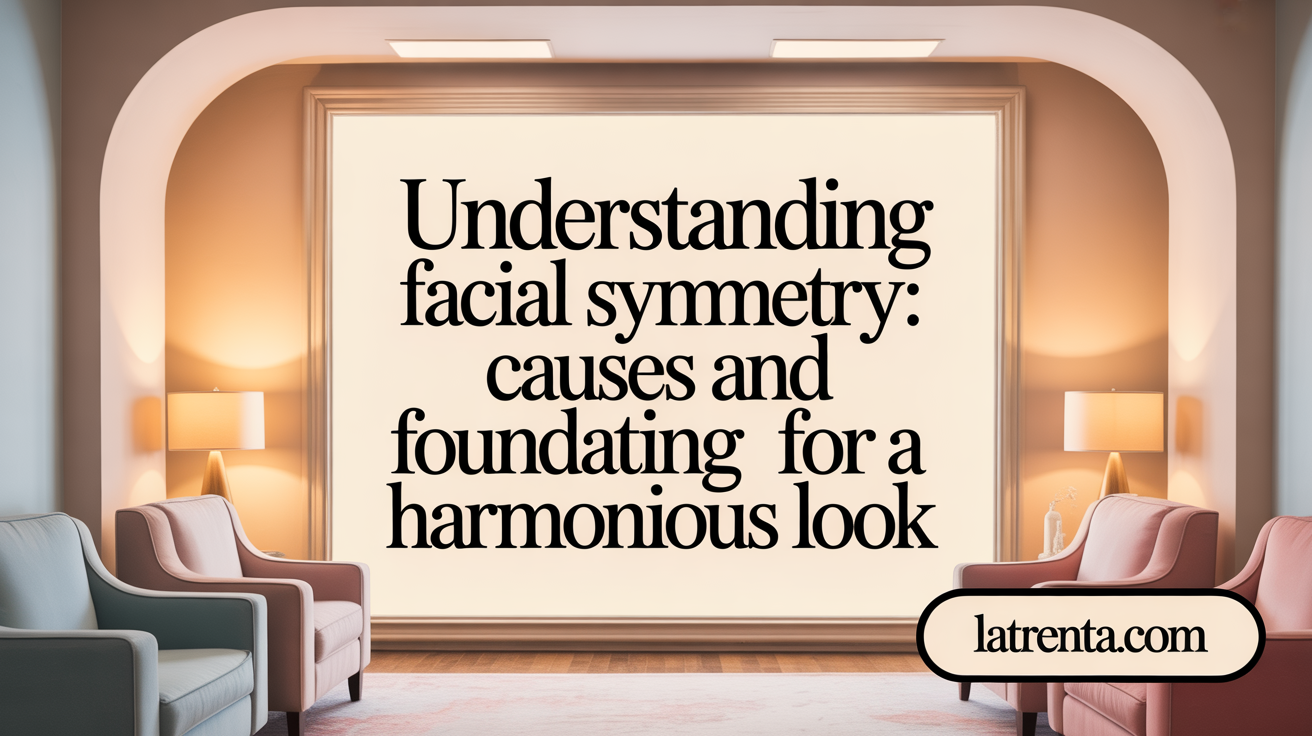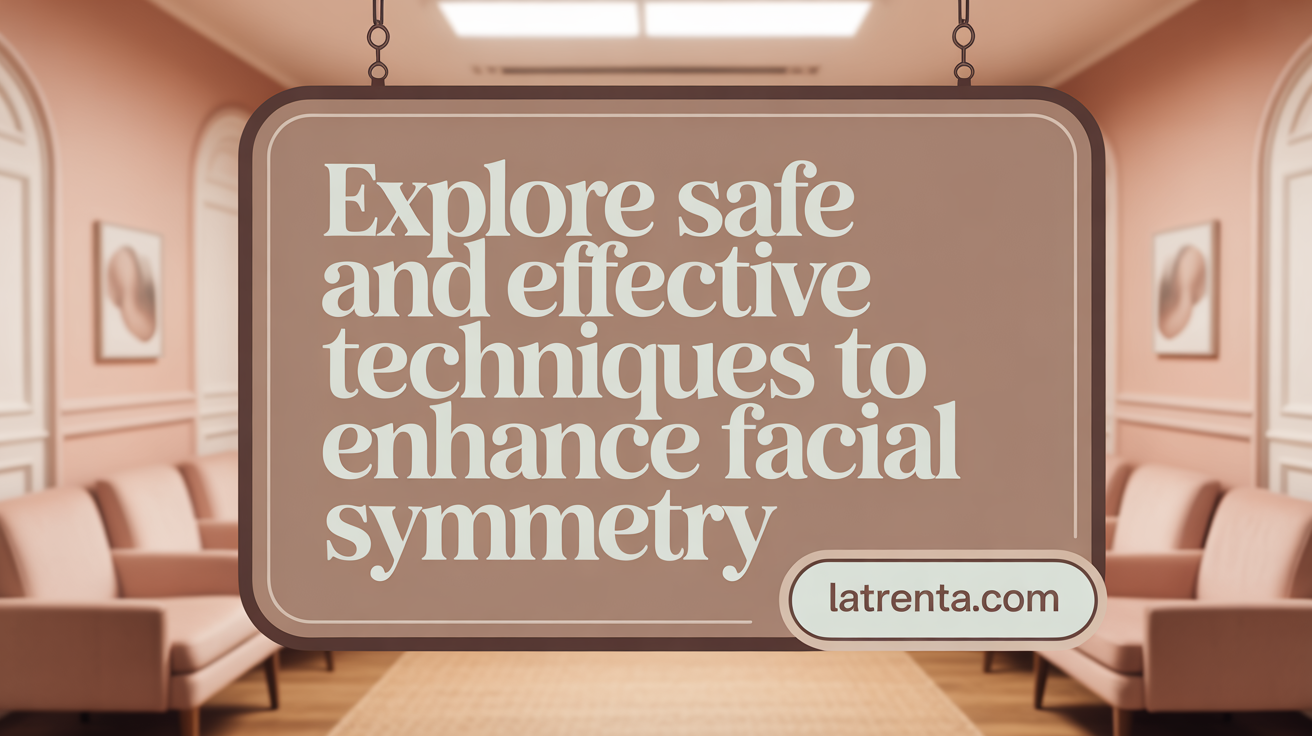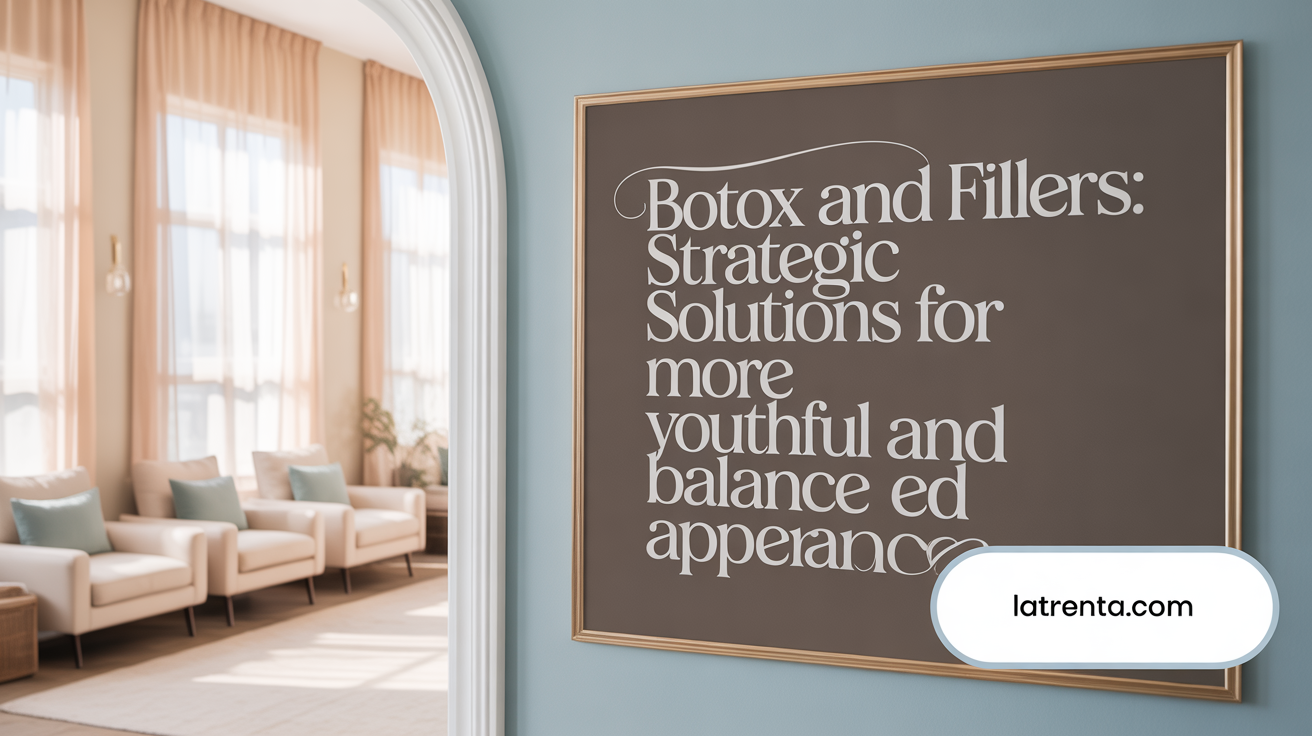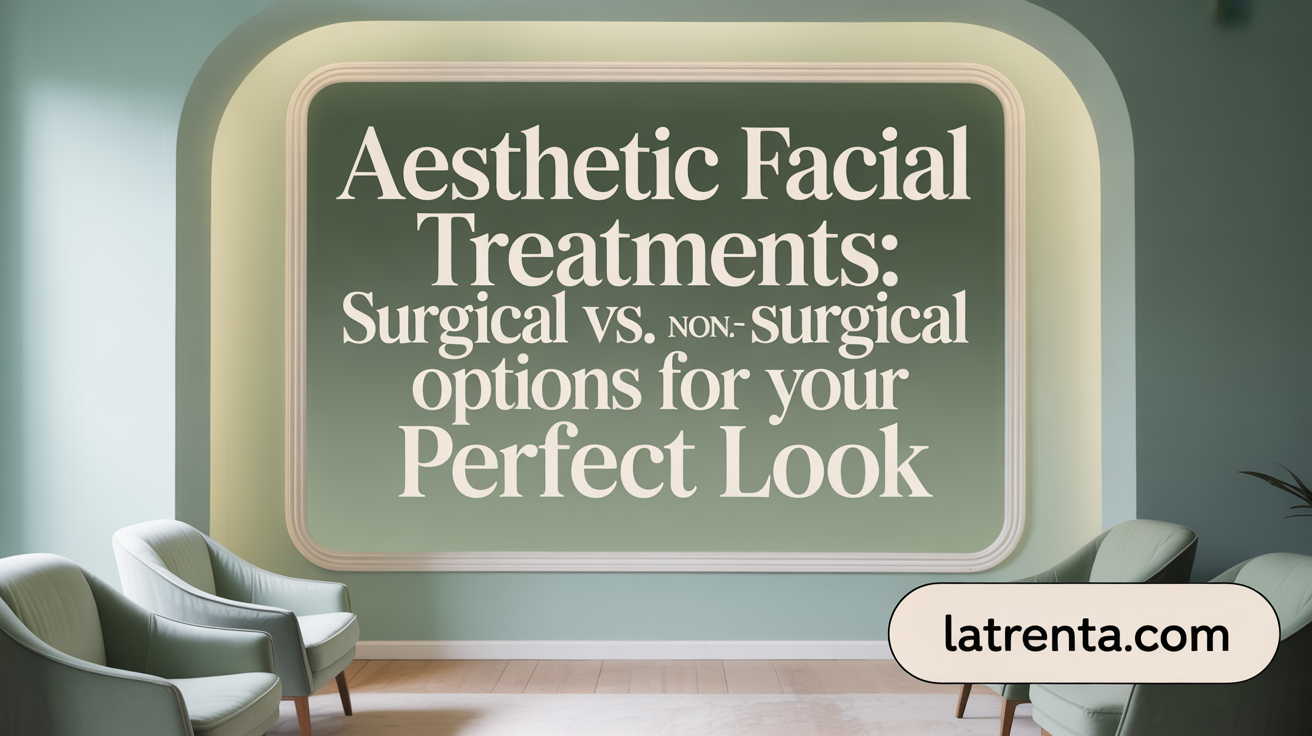Understanding Facial Symmetry and Its Importance
Facial symmetry is often associated with beauty, attractiveness, and a sense of harmony that transcends individual features. While perfect symmetry is rare, subtle improvements can significantly enhance facial balance and self-confidence. This article explores the non-surgical avenues available today to help achieve greater facial symmetry through innovative, minimally invasive methods tailored to individual needs and anatomy.
Foundations of Facial Symmetry and Causes of Asymmetry

What is facial symmetry, and why is it important?
Facial symmetry refers to how closely the two sides of the face mirror each other. Achieving balanced features is often associated with beauty and attractiveness, influencing perceptions of health and youth. Facial harmony, however, also considers proportion and individual features, creating a pleasing overall appearance.
Common causes of facial asymmetry including genetics, aging, trauma, and lifestyle
Facial asymmetry can be present from birth or develop over time. Genetic factors such as craniosynostosis, hemifacial microsomia, and syndromes like Goldenhar can cause structural differences. As we age, changes in bone density, muscle tone, and skin elasticity contribute to uneven features. Dental problems, like misaligned teeth, can affect jaw and cheek symmetry. Injury or trauma to facial bones or soft tissue often leads to deformities or changes in face shape. Lifestyle influences, including poor diet, insufficient sleep, and sun exposure, can also impact skin quality and muscle tone over time.
Assessment methods for identifying asymmetry such as mirror comparison and photo analysis
Evaluating facial asymmetry involves comparing the face in a mirror or analyzing photographs from different angles. Dental and medical professionals may use imaging studies to quantify differences in facial structures, helping to determine the underlying causes and best treatment options.
How facial harmony involves a holistic understanding of soft tissue, bone structure, and individual features
Achieving facial harmony requires a comprehensive approach that considers both soft tissue (muscles, skin, fat) and underlying bone structure. Understanding each person's unique features and proportions allows for personalized treatments, whether surgical or non-surgical, to enhance overall balance.
What causes facial asymmetry?
Facial asymmetry arises from various causes including genetics (such as craniosynostosis and hemifacial microsomia), aging-related changes like bone structure and skin elasticity shifts, dental issues causing jaw misalignment, injury or trauma to facial bones or soft tissues, and lifestyle factors such as poor diet and sleep habits. These elements contribute to differences in the left and right sides of the face, resulting in uneven features.
Non-Surgical Techniques to Improve Facial Symmetry
How can facial symmetry be improved using non-surgical methods?
Non-surgical approaches provide several ways to enhance facial harmony without the need for invasive procedures. They include both active exercises and cosmetic treatments.
Facial exercises are designed to target specific muscles, such as eyebrow raises, cheek lifts, and jawline workouts. These movements help tone and strengthen the muscles, which over time can lead to a more balanced appearance.
Injectables like Botox and dermal fillers are popular non-invasive options. Botox and Dysport relax overactive muscles, smoothing out asymmetries caused by muscle imbalances. Dermal fillers, composed mainly of hyaluronic acid, are injected into areas like the cheeks, lips, or chin to add volume, reshape features, and conceal deep lines, contributing to a more symmetrical look.
Makeup techniques and hairstyling also play a role in creating perceived symmetry. Contouring with bronzers and highlighters can define facial features, subtly balancing uneven features visually.
In addition to injectables, minimally invasive treatments such as thread lifts and radiofrequency (RF) therapies are used. Thread lifts involve the insertion of special threads to lift sagging tissues, while RF treatments stimulate collagen production, tightening the skin and improving contours temporarily.
It’s important to recognize that non-surgical methods typically offer temporary effects, lasting from a few months up to around a year. Regular maintenance treatments are needed to sustain the results.
Overall, combining these strategies can significantly improve facial symmetry, boost confidence, and enhance facial harmony, especially when tailored to individual needs. Consulting with qualified providers ensures safe, effective, and natural-looking outcomes.
Overview of Popular Non-Invasive and Minimally Invasive Procedures

What non-invasive and minimally invasive procedures are available for facial balancing?
Facial balancing can be achieved through various non-surgical and minimally invasive methods that focus on restoring harmony and proportion to the face.
The most common options include dermal fillers and Botox injections. Dermal fillers, especially those made from hyaluronic acid like Juvederm or Restylane, are injected into specific areas such as the cheeks, chin, jawline, lips, and temples. These help add volume, define contours, and correct asymmetries, providing results that last from about 6 to 18 months. The procedure is quick, often completed within 30-60 minutes, and involves minimal discomfort.
Botox or other neuromodulators like Dysport are used to relax overactive muscles. This reduces excessive muscle movement that can cause asymmetry or wrinkles, especially around the forehead, eyes, and mouth. The effects typically last around 3 to 4 months, and treatments can be repeated to maintain the balance.
In addition to injectables, thread lift procedures use specially designed threads, such as Aptos or Silhouette, to lift sagging facial tissues and stimulate collagen production. This technique offers a subtle lift with minimal downtime, promoting durability through tissue remodeling.
Radiofrequency treatments like ThermiSmooth utilize heat energy to stimulate collagen production, resulting in skin tightening and improved facial contours. These treatments are non-invasive, usually require little to no recovery time, and enhance facial harmony.
The entire process involves a comprehensive consultation, where a qualified practitioner assesses facial structure and discusses goals. Most treatments require no downtime, and side effects are typically mild, such as swelling or bruising.
Overall, these options provide safe, effective, and customizable solutions for those wishing to improve facial symmetry and achieve a natural, youthful appearance without surgery.
Benefits and Strategic Applications of Botox and Dermal Fillers
 Non-surgical treatments like Botox and dermal fillers have become popular options for enhancing facial symmetry and overall harmony. These procedures offer many advantages, such as immediate visible results, minimal recovery time, and high levels of customization tailored to individual facial features.
Non-surgical treatments like Botox and dermal fillers have become popular options for enhancing facial symmetry and overall harmony. These procedures offer many advantages, such as immediate visible results, minimal recovery time, and high levels of customization tailored to individual facial features.
Botox is particularly effective in relaxing overactive muscles that contribute to asymmetry, especially around areas like the eyebrows, jawline, and lips. This relaxation helps restore a natural balance, softening harsh lines, and promoting a more relaxed, youthful expression. The effects of Botox typically last about 3 to 4 months, making it a flexible option for ongoing facial refinement.
Complementing Botox, dermal fillers are used to add volume to areas that may have lost fullness due to aging or structural differences. Commonly treated zones include the cheeks, lips, and under-eye regions. Fillers, often made of hyaluronic acid, provide immediate results that can last from several months to approximately two years, depending on the product used.
Together, Botox and fillers can be deployed strategically to correct minor asymmetries caused by genetics, aging, or medical conditions, creating a more balanced and youthful appearance. Treatment planning often involves facial mapping and imaging technology to ensure that the outcomes enhance natural facial harmony.
Patients benefit from these minimally invasive procedures through improved self-confidence, a refreshed appearance, and a more symmetrical look—sometimes achieving results that are subtle yet impactful. By combining these treatments, practitioners can tailor approaches that meet individual needs, emphasizing natural-looking results without the need for surgery.
Choosing the Right Non-Surgical Treatments for Facial Balancing
 When considering facial balancing and addressing aging concerns non-surgically, it’s important to evaluate several factors that influence treatment choices.
When considering facial balancing and addressing aging concerns non-surgically, it’s important to evaluate several factors that influence treatment choices.
First, individual facial anatomy plays a significant role. Every face is unique, with specific features and asymmetries stemming from genetics, aging, or lifestyle. A thorough assessment by a qualified specialist helps tailor treatments like dermal fillers, Botox, or skin tightening to enhance natural harmony.
The degree of facial asymmetry and the specific concerns determine the appropriate approach. For minor volume loss or slight asymmetries, dermal fillers can restore fullness and contour delicate areas like cheeks or lips. For dynamic issues such as facial muscle overactivity, Botox or Dysport can relax targeted muscles, smoothing out lines or correcting muscle imbalance.
Another important consideration is the treatment duration and maintenance. Results from Botox typically last about 3-4 months, requiring repeat treatments for sustained effect. Dermal fillers have a longer lifespan—generally 6 to 18 months—depending on the product used, which may necessitate periodic touch-ups.
Skin tightening treatments, such as ThermiSmooth or RF microneedling, stimulate collagen production to improve skin laxity and texture. These procedures usually require a series of sessions and offer gradual, subtle improvements. Since their effects can last up to a year, ongoing maintenance may be needed.
Consulting with a specialist is vital for personalized planning. A facial expert can analyze facial structure, identify asymmetries, and set realistic goals. They will often recommend a combination of treatments—such as fillers for volume, neuromodulators for muscle relaxation, and skin tightening techniques—to achieve balanced, harmonious results.
In some cases, non-surgical methods might not be sufficient, especially for more pronounced asymmetries or significant aging signs. Surgical options like rhinoplasty, chin augmentation, or facelifts may be more appropriate for long-lasting, definitive correction.
Lastly, combining multiple treatments can optimize outcomes and deliver a comprehensive enhancement of facial harmony. For example, using fillers to define contours, Botox to relax overactive muscles, and laser treatments to refine skin texture can work together to improve overall facial appearance.
In summary, selecting suitable non-surgical facial balancing methods requires a careful assessment of anatomy, goals, and the expected longevity of results. A consultation with a qualified specialist ensures a tailored approach, maximizing natural-looking, satisfying outcomes.
Understanding the Role of Surgery Versus Non-Surgical Options

What are the differences between surgical and non-surgical facial symmetry correction techniques?
Surgical correction methods for facial asymmetry involve invasive procedures such as rhinoplasty, facelifts, chin and jawline implants, brow lifts, and eyelid surgeries. These techniques alter the bone structures or soft tissues to create more permanent and dramatic improvements. Surgery typically requires general anesthesia or sedation, involves longer recovery periods, and carries higher risks and costs.
On the other hand, non-surgical options focus on soft tissue adjustments and superficial skin treatments. These include Botox or Dysport to relax overactive muscles, dermal fillers made of hyaluronic acid or other substances to add volume, thread lifts to slightly tighten skin, and radiofrequency treatments like ThermiSmooth to stimulate collagen production. Non-invasive methods usually provide temporary results, often lasting from a few months up to a year, with minimal downtime and lower risk.
Which approach is suitable for different levels of facial asymmetry?
The choice between surgical and non-surgical treatments depends heavily on the severity of asymmetry. Minor and early aging concerns, such as slight unevenness or volume loss, are often well-suited for non-surgical procedures. They offer quick, customizable improvements and a lower barrier to entry.
For more pronounced or complex asymmetries, especially those caused by structural issues or significant bone misalignments, surgical options tend to deliver more lasting and noticeable results. Surgical interventions can reposition bones, remove excess tissue, or reinforce features for a balanced appearance.
Examples of common surgical procedures
| Procedure | Purpose | Key Benefits | Typical Recovery Time | Main Risks |
|---|---|---|---|---|
| Rhinoplasty | Corrects nose size and shape | Improves facial balance | 1-2 weeks | Swelling, infection |
| Facelift | Lifts and tightens facial skin | Restores youthful contours | 2-4 weeks | Scarring, swelling |
| Chin implants | Augments jawline | Enhances symmetry and profile | Several weeks | Implant displacement |
| Eyelid surgery | Opens and levels eyes | Better facial harmony | 1-2 weeks | Dry Eyes, bruising |
Advantages and limitations of non-surgical approaches
Non-surgical treatments are valued for their minimal invasiveness, quick results, and ability to be tailored to individual features. They allow for refinement of facial balance without significant downtime or scarring. However, they are limited mainly to minor corrections and provide temporary effects, requiring repeat treatments to maintain results.
A blended approach for optimal results
Many practitioners now favor a holistic, multi-layered plan combining surgical and non-surgical techniques. For example, surgery can address structural imbalances, while fillers and Botox fine-tune the soft tissues and facial expressions. This tailored approach aims to maximize facial harmony, minimize risks, and achieve natural-looking results that enhance both appearance and self-confidence.
Embracing Non-Surgical Innovations for Facial Harmony
Non-surgical techniques for enhancing facial symmetry have transformed the landscape of aesthetic treatment, offering safe, customizable, and effective options with minimal downtime. Whether through Botox, dermal fillers, thread lifts, or radiofrequency approaches, these methods provide an opportunity to achieve a balanced, harmonious appearance suited to individual needs. Understanding the scope, benefits, and limitations of these treatments is essential for making informed choices. Consultation with qualified professionals ensures personalized strategies that enhance natural beauty while respecting each person’s unique features and goals. While surgical interventions remain vital for extensive corrections, the rise of non-invasive options opens an accessible path towards facial harmony for many seeking subtle improvements without surgery.
References
- Correcting Facial Asymmetry: Surgical & Non-Surgical Methods
- Achieving Facial Harmony: A Guide to Non-Surgical Options
- Facial Asymmetry Correction Without Surgery - Pure Skin Laser Center
- Facial Asymmetry - How to Fix Asymmetrical Face - Centre for Surgery
- Facial Optimization - Kristy Hamilton, MD, FACS
- Transforming Your Look: 3 Plastic Surgeries for Facial Symmetry
- Facial Symmetry: How Plastic Surgery Can Enhance Your Natural ...
- Facial Balancing in Portland OR: Surgical and Nonsurgical Options
- Facial Balancing Washington D.C. & Maryland
